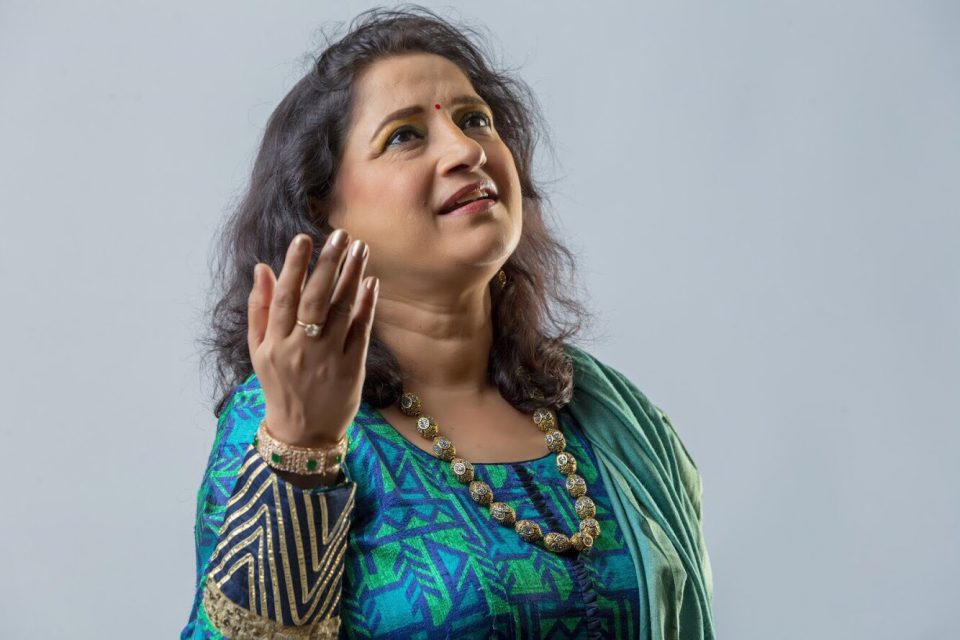Vocalist-Composer Kavita Seth on Balancing Her Worlds, ‘A Suitable Boy’ and More
The Mumbai-based Sufi music proponent features in film work as well as collaborations with electronic artists such as KSHMR and Lost Stories
One day on her way to visit the bank, singer and composer Kavita Seth encountered a fan. But this wasn’t for her film work (Seth’s most requested song remains “Iktara” from the 2009 movie Wake Up Sid) but for “Bombay Dreams,” her 2019 collab with top-rung EDM artists KSHMR and Lost Stories.
She recounts, “He said it was an incredible song. You understand with filmi songs since they have a totally different level of popularity. Independent songs and that too by a person who’s just seen you walking on the road, that’s different. You realize it’s got to a very different level.”
Over the span of nearly two decades, Seth has been deftly wandering the realms of Sufi music, film soundtracks and electro-fusion. Late in October, Seth’s work as singer on filmmaker Mira Nair’s series adaptation of author Vikram Seth’s A Suitable Boy reached more ears than ever, being the musical voice for veteran actor Tabu’s character Saeeda Bai. “I wrapped up recording in three days, I had a lot of fun working with Mira ji and the team. I feel like this is why she’s so well respected, because she’s really well prepared. All my projects have been that way and I feel lucky about that. It’s got great feedback in the U.K. right now. I get videos from people singing them, in my Instagram DMs,” Seth says.
In this interview with Rolling Stone India, Seth talks about growing as a musician and working with her musician sons Kanishk Seth and Kavish Seth, plus a music and meditation course that’s started up. Excerpts:
What led you to start offering a music and meditation course?
I had in mind for a while that I should share with people what I’ve learned during lockdown. In our minds, we all have stress and insecurities and for half an hour, we look for peace of mind.
I wanted people to feel the same that I felt when I was using music for meditation. I researched more and found my own technique based on what people would prefer in terms of their own lifestyles. It depends on the individual at the end of the day, otherwise the scope is unlimited.
I penned down a lot of material, on what I can add and how necessary music is in meditation. No matter where you are, if you’re feeling stressed, it aims to help. I readied all this material into classes, four classes in a month with a bit of home assignments.
What is it like being a teacher online for you?
I’ve been a teacher before in Delhi Public School, before I came to Mumbai. But this isn’t just teaching – I think people know a lot and hold a lot of information within themselves, but the guru’s job is to enlighten them about it. Ab toh Google baba hai – sab kuch technique online hai [Now one goes to Google, all the techniques are online]. But learning from someone as a guide, when you say, ‘I’m with you.’ I was keen on that.
Your songs with Kanishk, like “Rangi Saari” really did well. Before that you worked with him on the album Trance with Khusrow. Was the early days just about encouraging him?
I was really happy to see how “Rangi Saari” was received. We didn’t even make a single expense on the making of that song. We just thought, ‘Khushbu ke tarah failne do’ [let this spread like a fragrance]. It was all organic.
It wasn’t so much encouragement, because Kanishk already had all these skills in him and he was learning on his own. With trial and error, I gave him a loop and told him, ‘Iske saath khelo’ [Play around with this]. Parents usually don’t give their children liberty, they might put them down. But I never did that with him or Kavish. We didn’t spoon feed him or anything. He took many years to mature, from a 14-year-old to putting out music when he was 18.
You worked with KSHMR and Lost Stories on songs. How do you consider such offers from the electronic music world?
I’m very open with offers and I keep experimenting. With collaborations, you never know the other’s technique or style. I never thought ‘Bombay Dreams’ would turn out the way it did. It’s been an interesting journey. Maza aa raha hai [I’m having fun].
How did you come to work on Mira Nair’s new series A Suitable Boy?
I got a phone call from Mira ji’s office saying she wanted to get on Skype with me. Then I met her when she came to India. She was so fully prepared with the script and very minute details.
Mira ji has always had great taste when it comes to music. I always knew that, right from when I’d known of Monsoon Wedding. I wondered to myself before, ‘It would be nice to work with her’ and I put that thought out into the universe and it just came to me. I never imagined that not only would they contact me, but also tell me that Mira ji has been following my work for two years and knows that I’m a composer. She was listening to [2019 album] Main Kavita Hoon and found out that I’m a singer and composer.
People say you have to really slog it out in the film music world but I think if you work with sincerity, sab ko sab kuch pata chalta hai [everything becomes clear]. Everyone gets what they wish for. If anyone’s reading this, I’d just tell musicians that just do your work to the best of your ability and things will come your way.
Watch the video for “Bombay Dreams” by KSHMR and Lost Stories ft. Kavita Seth below.




